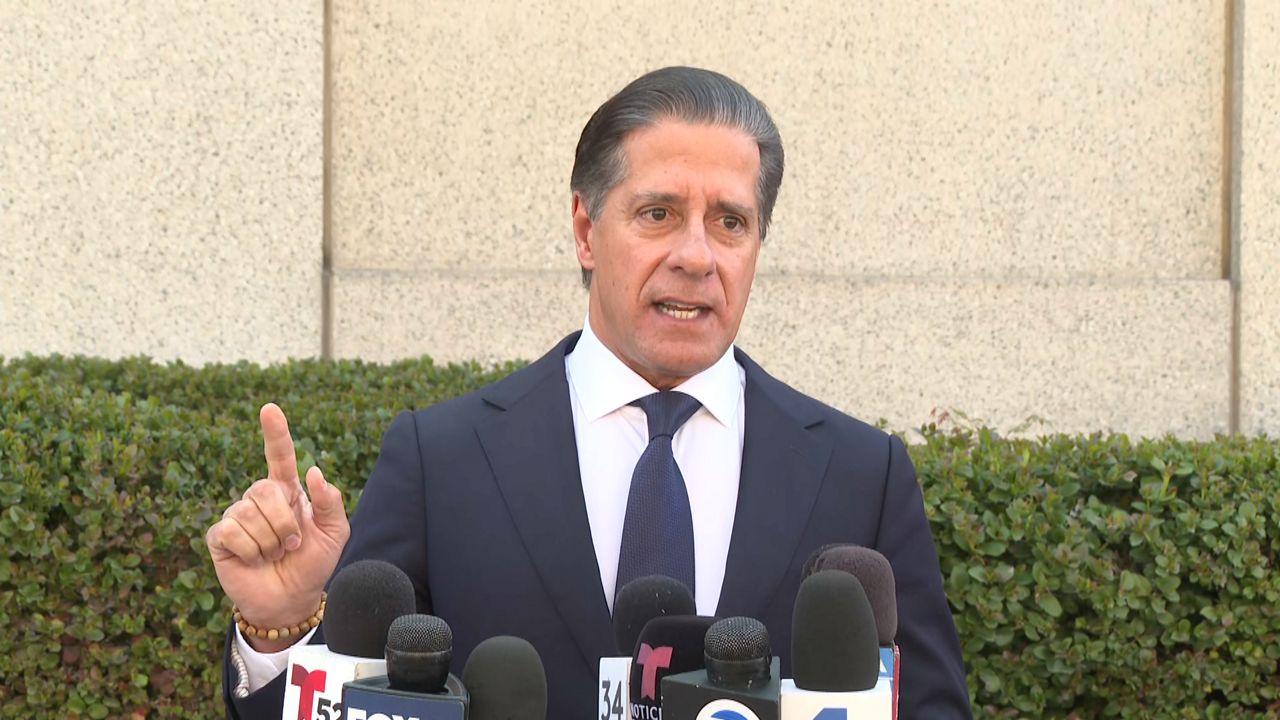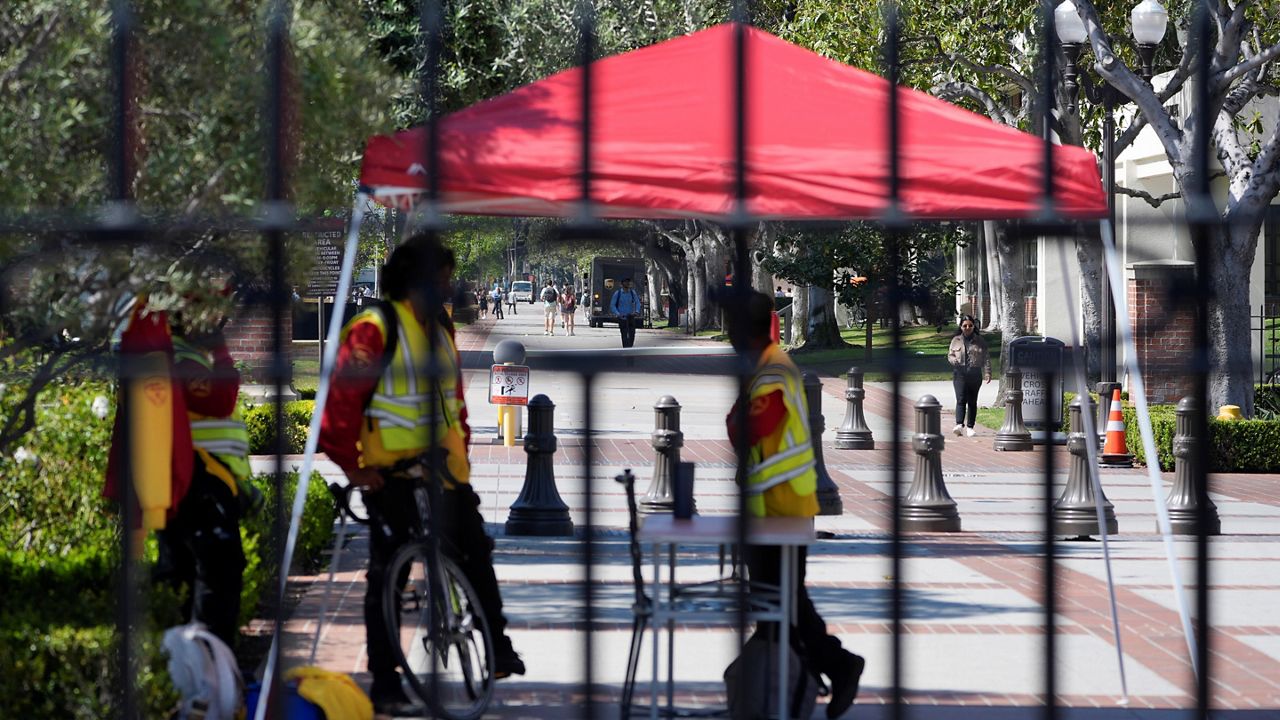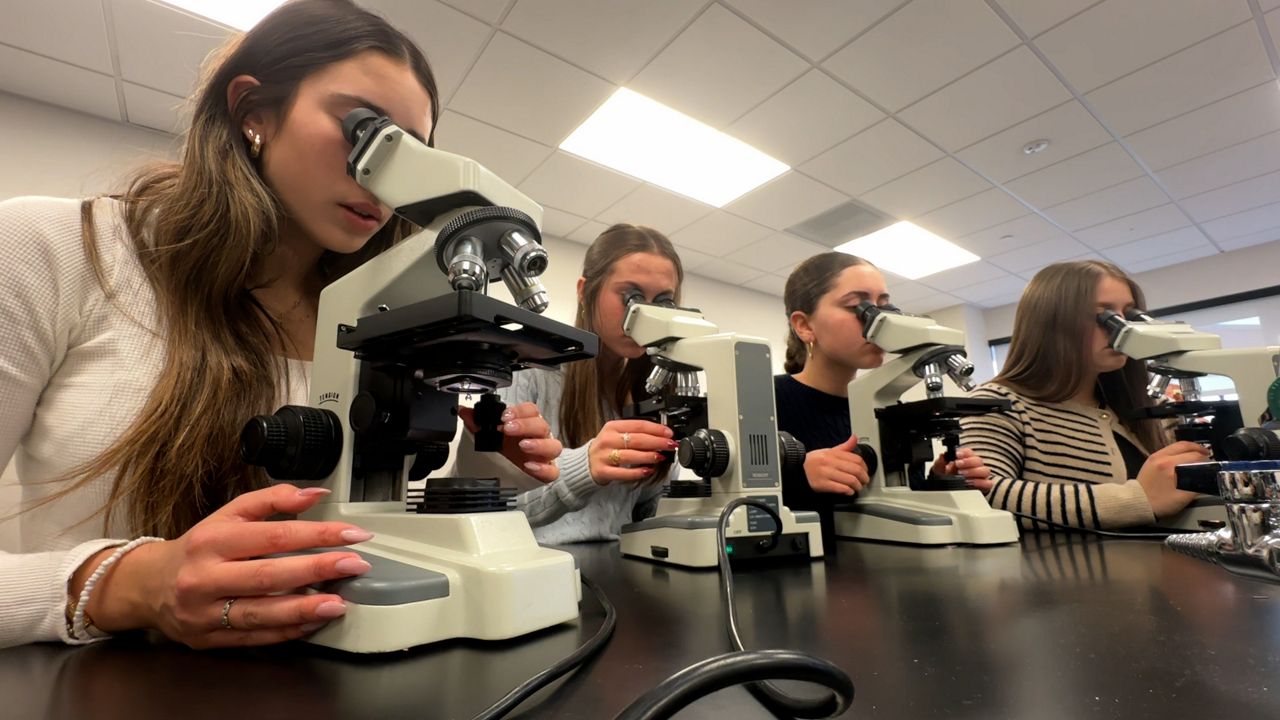SANTA ANA, Calif. — The Santa Ana Unified School District hopes to make big changes this year to school lunches while simultaneously adjusting to environmental issues. Wildfires, drought, climate change and the pandemic all affect the general food supply and so, in turn, school lunches.
A lot goes on behind the scenes when you go from serving 8,000 to-go meals per day to 30,000 meals in cafeterias for the fall 2021 semester.
Mariela Alonzo works in the school district's central kitchen, which provides food for almost 50 schools. She has so many mouths to feed, and two of them are her own kids.
"I get a personal fulfillment," Alonzo said. "I know that my job is making a difference."
Alonzo prepares what nutrition specialist Tracey Zoleta puts on the menu. Lately, there have been a lot of substitutions and backups needed.
"As far as what we want to put on the menu, I'm really excited, and I think the kids will be happy, but I'm just concerned if we're going to be able to get all these items," Zoleta said.
Updates regarding weather conditions and resulting shortages come in every day. To hedge their bets, they avoid some items altogether because of how unpredictable the crop is.
For example, jicama is popular but too risky to put on the menu since most of the district's produce is grown in-state. California's record drought and the massive wildfires are creating scarcity and higher prices.
Also, there are fewer distributors to order from because several companies SAUSD used to work with decided to focus exclusively on commercial orders when schools went remote and stopped buying for a long time.
Director of Nutrition Services Josh Goddard makes sure the warehouse is stocked regardless.
"We're always going to have meals available, no question. We're going to ensure that students are always fed," Goddard said.
Goddard said this uncertain time is a good time to make some big-picture changes. Right now, all of the lunch entrees are bought precooked and frozen. He wants schools to cook meals from scratch instead, which would take more training and planning and give them so many more options when picking meals and adjusting for shortages.
It's also tastier than the factory-made stuff.
"School lunches need to be better, and we're hearing that directly from students," Goddard said.
Just like the students, Alonzo will be learning as the district's central kitchen tries out recipes.
"I just want the community to know that we're here for them," Alonzo said.
Goddard said he hopes to move away from frozen entrees by the end of this school year.











